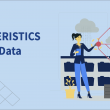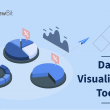Introduction
Every growing business now needs a website, and maintaining an effective web presence is crucial to business success. The power of web applications has now reached every portable smart device we can imagine in our day-to-day life. In this way, prospective users can be attracted and convinced of your products or services. However, creating websites and web applications can be extremely frustrating at times. Digital marketing efforts will be futile if your website is not appealing to your audience. Therefore, companies with an eye toward the future are investing more heavily in web development in order to meet their tech-savvy customers’ expectations.
So, we have compiled a list of some of the best web development tools available. This collection of tools will assist you in making web development easier and more efficient. But let’s first explain what web development is so that we can better understand the best web development tools.
What is Web Development?
Web Development, also called website development, refers to the process of creating, building and maintaining web applications for the Internet or the Intranet. These web applications are hosted on a server or a cloud server and are accessed through a web browser. From single-page web applications to complex web applications and Content Management Systems (CMS), all are part of web development. Web Development includes Web Programming, Web Design, Web Publishing, and Database Management. Web Developers build web applications using different programming languages such as HTML, CSS, JavaScript, PHP, Python, Java, etc. Development with these programming languages enables the functionality of the website.
Confused about your next job?
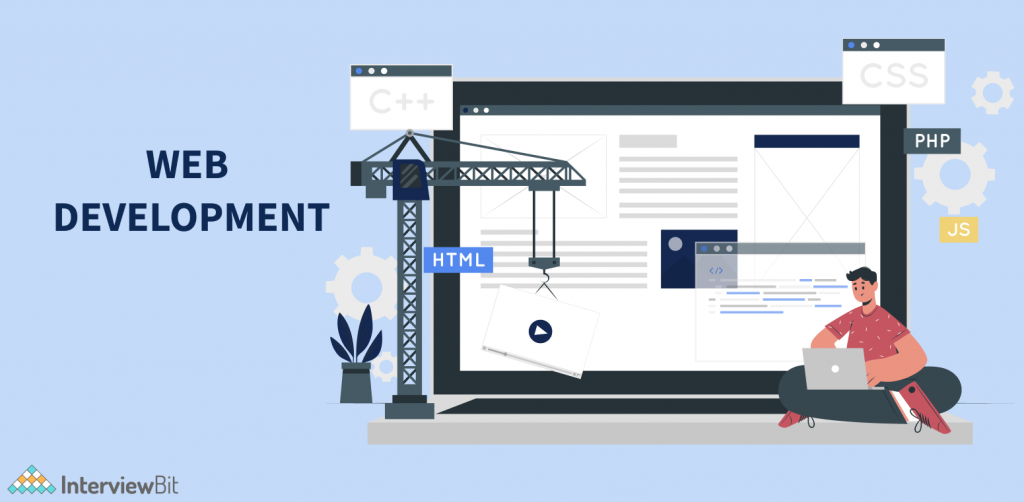
As a whole, web development refers to the actions, updates, and operations involved in building, maintaining, and managing a website in order to ensure its performance, user experience (usability), and speed. Professionals involved in developing and maintaining websites are referred to as web developers or (more commonly) web devs. In the field of web development, we can divide it into two categories—Front End Development (user-facing side) and Back End Development (server-side).
The combination of front-end development and back-end development is known as full-stack development.
- Front End Development: It is also known as client-side scripting. It is used to build the structure & design of a website, adding styles to the structure and making the website interactive. It focuses on how a website displays content- text, images, videos, and graphics to an end-user. An end-user directly interacts with the content displayed on the website. The programming languages used for front-end development are HTML, CSS, and JavaScript.
- Back End Development: It is also known as server-side scripting. It works behind the scenes of a website. It is a part of a website that an end-user can’t see. It is used to store and organize data. The data is stored in a database. It focuses on the logic behind the web application, for example- creating new data in a database, fetching data from a database, and updating and deleting data. This is done by communication between the front end and the back end.
Let’s take an example. Whenever an end-user fills out a form from the client side, the browser sends a request to the server side. The server-side response to the client side with some relevant information is displayed by the browser on the client side. The programming languages used for back-end development are PHP, NodeJS, Python, Java, etc.
Why Use Web Development Tools?
Web Development life cycle involves many stages and it follows an iterative approach. It requires a lot of effort from the developers. From selecting a programming language, and framework, to a server on which the application is to be hosted, all these are a part of the web development lifecycle.
To make development easier for developers, web development tools are designed. These tools simplify the web development process. Developers can easily create responsive web designs, resulting in enhanced browsing experiences, improved Search Engine Optimization (SEO), and reduced bounce rates, as well as lower maintenance costs using these tools.
Top 10 Web Development Tools
In an era when the number of web dev tools keeps growing every day, finding the best one can sometimes be daunting. To help you out, we put together a list of the top 10 web development tools that will help you make your web development process faster and easier.

1. Visual Studio Code
Visual Studio Code, also known as VS Code, is a free open-source code editor which is available for Windows, Mac, and Linux operating systems. In addition to running everywhere, it allows you to debug code, input Git commands, and write SASS code. In Visual Studio Code, the simplicity of a source code editor is combined with powerful developer tools, such as IntelliSense and debugging. Probably the best code editor you can use today is Visual Studio Code.
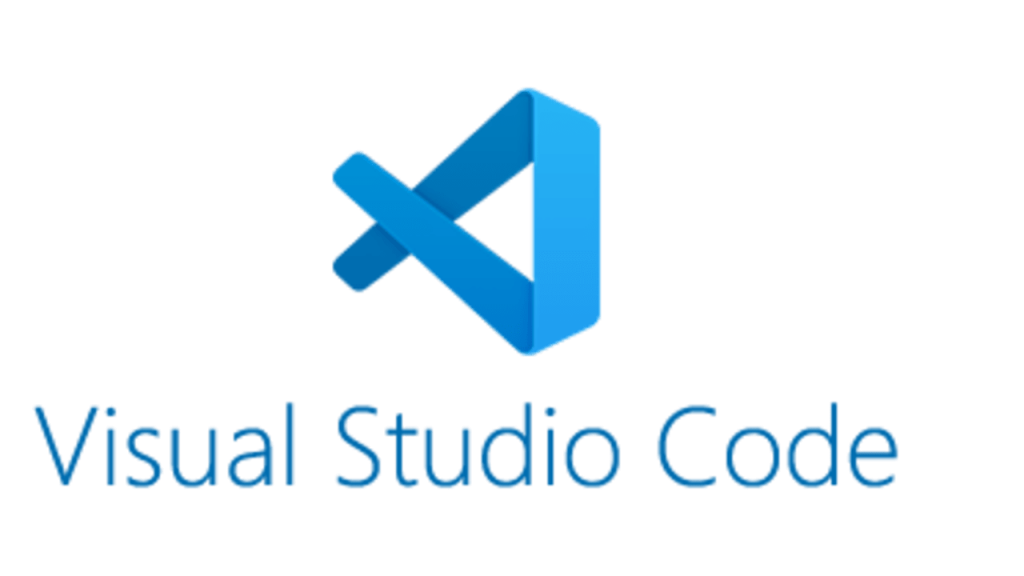
Features
- As this code editor itself is customizable, it provides debugging support with breakpoints, call stacks, and interactive consoles.
- It has a wide variety of features such as code debugging, code refactoring, Git support, Testing support, a Terminal for inputting commands, and customization (layout, fonts, icons, and colours).
- Particularly, it offers good JavaScript and Python support, making it potentially useful both for coding a website’s frontend and backend functions.
- This editor is widely used because of its wide range of extensions (like Javascript code snippets, CSS peek, auto close tag, REST Client, etc.) and support from Microsoft.
2. Adobe XD
Adobe XD can be considered one of the best vector-based UI (User Interface)/ UX (User Experience) design tools for web/graphic designers. It offers a clean UI for designing any kind of application, from smartwatch applications to full-fledged websites. Adobe XD is providing handy tools for designing professional wireframes and prototypes. Real-time inspection of flows and measurements provides a strong idea to developers as to what is expected from the web application product. The tool acts as a bridge between designers, developers, and stakeholders.
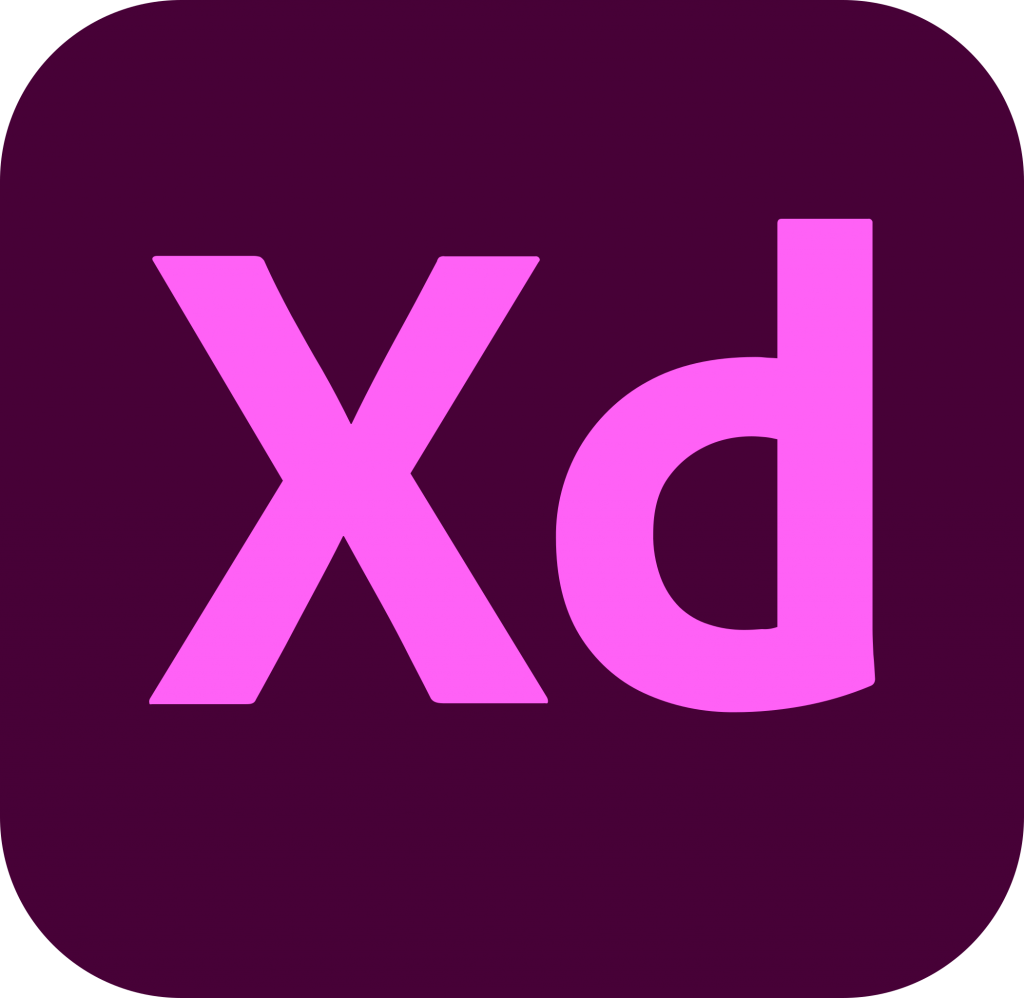
Features
- As XD is vector-based, it allows users to sketch wireframes, mockups, and build interactive prototypes, as well as create high-fidelity designs for any screen.
- Whether you’re working alone or in a team, Adobe XD is the best tool for vector-based UI design, wireframes, interactive design, prototyping, and high-fidelity website/application design.
- It is possible to design applications using voice commands.
- The 3D transformation functionality in Adobe XD allows you to create dynamic, three-dimensional designs from static objects in a matter of seconds.
- Several third-party plugins (such as Undraw, UIFaces, Trello, Web export, etc) are supported by Adobe XD that provide additional functionality. Several plugins are available to manage assets, automate publishing, illustrate icons, etc.
3. Figma
Figma is also one of the most popular prototyping tools for web developers and designers. Figma offers all the tools you need for web design, including vector tools for fully-fledged illustration, prototyping capabilities, and code generation functionality. It becomes a great tool for corporate as well as professional teams who are working on building a web application-based product from scratch. With this tool, users can collaborate and create cost-effective web designs. It is widely used by developers, designers, freelancers, and professional corporate teams.

Features
- Figma is compatible with various operating systems, including Linux, Windows, and Mac. Browsers such as Firefox, Google Chrome, and Internet Explorer can all run web-based applications.
- Figma files are stored in the cloud, meaning that users can access them from anywhere. Any changes made to these files are automatically saved.
- With Figma, the web design process is transparent so that all parties involved get aligned fast – and stay aligned.
- Figma was built for the future of the web, that’s why it has features you won’t find anywhere else, such as a modern pen tool and Instant arc design.
4. GitHub
GitHub is one of the best open-source tools to maintain all your projects in repositories on a single platform. This is also a great tool to showcase your self-made web dev projects. Open source has also made great progress in helping developers grow their careers professionally. Not only the benefit of open source, but it is also a great tool for building projects in a team, and maintaining branching strategies is pretty easy and systematic with GitHub. As the best web development tool, it allows developers to review code, manage projects, and develop software with ease.

Features
- GitHub allows you to share code with co-workers, classmates, friends, and other strangers.
- With this tool, you gain built-in code review, and extraordinary collaboration features, such as bug tracking and feature requests.
- GitHub allows you to automate anything such as CI (Continuous Integration)/ CD (Continuous Development), testing, planning, labelling, project management, testing, etc.
- Code is automatically secured as you write it, and vulnerabilities are detected before your code reaches production.
5. Bootstrap
Bootstrap is a popular open-source library of HTML, CSS, and JavaScript for creating responsive mobile-first applications on the web. Since its release in 2011, it’s been a handy tool for creating and customizing responsive mobile-friendly sites. It contains a large number of in-built UI components that are ready to use and we can customize them also. It also features SASS variables and mixins, and powerful JavaScript plugins. Bootstrap is simple to set up, and an experienced developer can create a functional layout with a responsive design in just a matter of minutes.
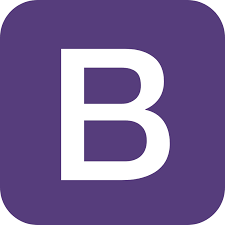
Features
- Among its novel features is its ability to integrate other web development tools such as SASS and JQuery, thereby extending its range of capabilities.
- The tool provides CSS and JavaScript-based design templates for typography, navigation, buttons, forms, and other interface components or elements.
- Bootstrap is also known for its responsive utility classes. A particular piece of content can be made to appear or disappear only when viewed on a particular device, depending on the screen size.
- With the readily available templates, even novices can easily create a website by simply following a tutorial or demo available on Bootstrap.
6. NPM (Node Package Manager)
NPM, or Node Package Manager, is considered one of the world’s largest software registries containing over 800,000 code packages. It enables NodeJS developers to discover packages of reusable code and assemble them in novel and powerful ways. Open-source developers from across the globe use NPM to share and borrow packages, and many large organizations manage their private development with NPM. We can also contribute with our own NPM packages. NPM provides us with a CLI (Command Line Interface) which is the most common way for developers to interact with NPM.
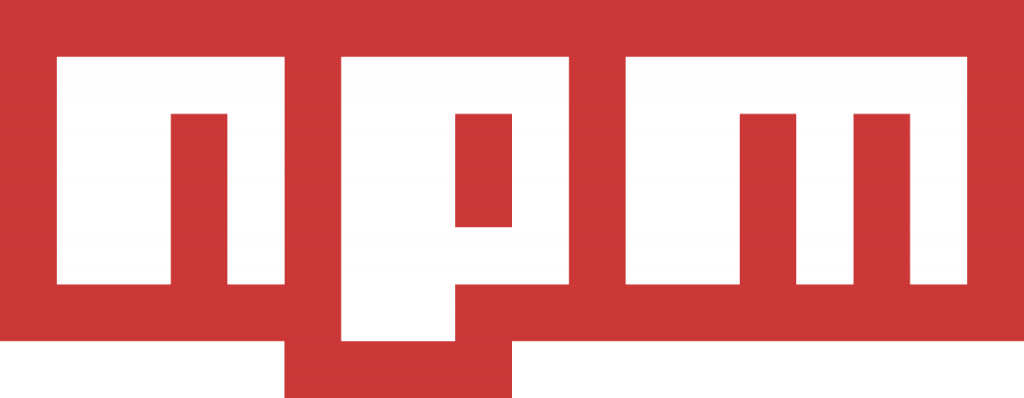
Features
- An open-source NPM solution provides you with the ability to publish unlimited OSS (Open source software) packages as well as discover & install public packages. It will also provide basic support and warn you about unsafe code automatically.
- NPM Orgs gives you access to all the basic features of the open-source solution, plus you can do token management and workflow integration, as well as manage team permissions.
- Furthermore, it provides some essential features such as industry-standard SSO (Single Sign-On) authentication, invoice-based billing, and dedicated private registries.
- For enterprise-level solutions, it offers security expertise, de-duplication of development, unrivalled support, and access control.
7. CodePen
CodePen is an excellent tool for front-end designers and developers to test their code in any language like HTML, JavaScript, and CSS. Ultimately, it is about accelerating and smoothing web development. It is an open-source, free, online code editor. It is one of the best tools for front-end development that allows you to build, deploy and test websites. Furthermore, it provides developers with some ready-made designs already made by other developers, and some of these designs are available for free.

Features
- As it offers all the features of an IDE (Integrated Development Environment) in a browser, you can use CodePen for building your entire project.
- CodePen supports a wide range of libraries and simplifies your code by making it readable so you can use them to design your project.
- The platform also enables developers to carry out experiments where developers can pick up instances of their projects and test them unit by unit on CodePen. As an example, they can test new code, buttons, animations, etc.
- It is easy to create small code snippets, commonly referred to as “pens”, and save them for later use.
8. MySQL
MySQL is the world’s most popular open-source relational database management system based on SQL (Structured Query Language). MySQL is a good database for beginner developers and can be handy in developing some good self-projects. It can be set up on a local machine easily and its syntax is easy to follow and implement. Since MySQL is a free database management system that is easy to learn, easy to set up, and scales quickly, it tends to be the top choice for backend developers. MySQL is capable of managing large databases and supports multiple users at the same time.
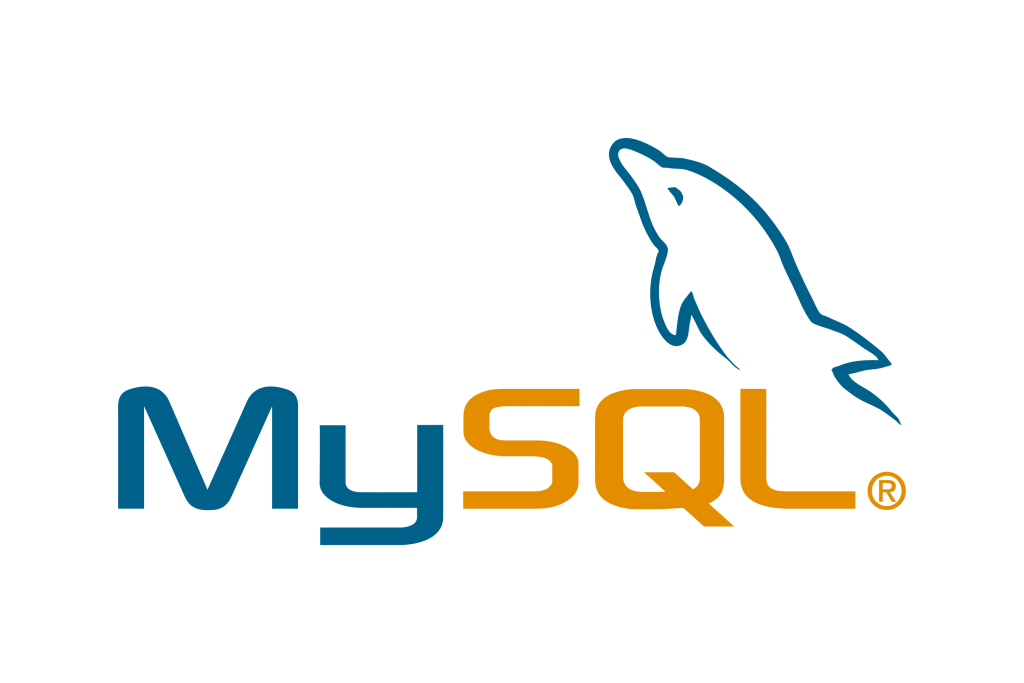
Features
- MySQL has a strong security layer that guards sensitive information. Moreover, MySQL protects passwords with encryption.
- Using MySQL is free, so we can access it from the official MySQL website without having to pay.
- Multi-threading is a key feature of MySQL, which makes it scalable. Data can be handled up to 50 million rows or more.
- MySQL has many plugin libraries for embedding the database into any application. For application development, it also supports stored procedures, triggers, functions, views, and much more.
9. Postman
Whether you have just started working with APIs or are just learning about them, Postman is a great collaboration tool that can be very useful for developing APIs. It is widely used for creating, sharing, testing APIs in the quickest of time. Using Postman’s features, developers can easily build APIs and collaborate efficiently. It has the capability to make various HTTP requests (including GET, POST, PUT, and PATCH), save environments for future use, and convert APIs into code for different languages (including Python and JavaScript).
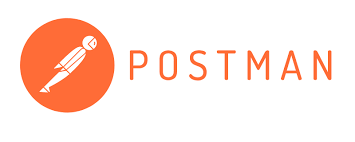
Features
- You can use Postman workspaces (such as personal workspace, public workspace, and team workspace) to organize API work and collaborate between teams and departments within your organization.
- Postman lets you easily store, catalog, and collaborate on API artifacts all in one place. API specifications, documentation, workflows, test cases, metrics, and everything else related to APIs are stored and managed by this tool.
- Postman includes impressive features that allow you to automate your test cases in javascript, such as the ability to write test suites, build requests with dynamic parameters, pass data between requests, etc.
- Besides offering numerous benefits, this tool is also very cost-effective. Postman’s free plan comes with limited features, but it’s very useful, whereas the paid version is also very affordable and cost-effective, with high-end features.
10. Chrome DevTools
Built-in web development tools like Chrome DevTools provided by Google Chrome browser are very powerful in terms of their debugging and testing capabilities. Diagnosing issues with APIs, frontend, or anything related to your web application becomes easier with this tool. The Debugger, Network tab, live debugging, a very powerful console, performance testing tools, and inspecting styles become very handy for developers to resolve issues quickly.
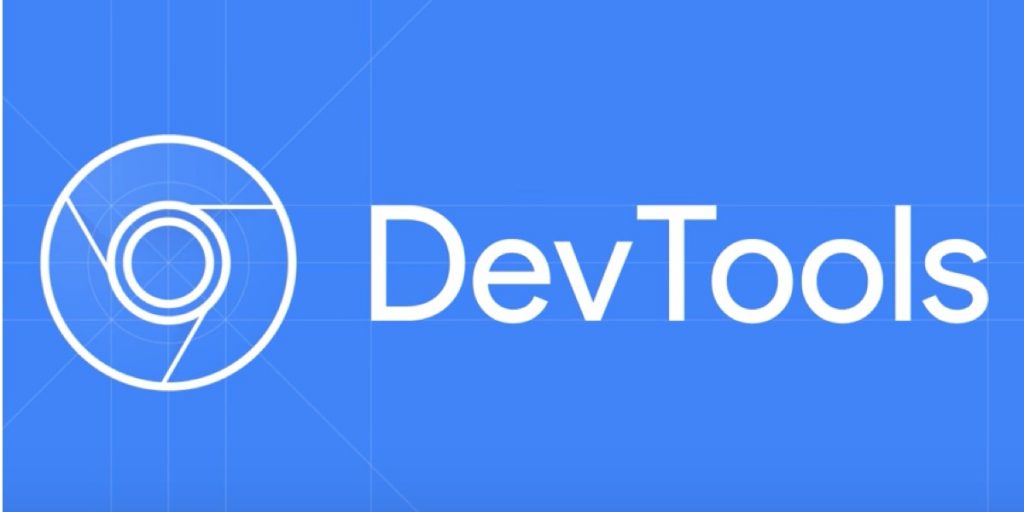
Features
- Chrome DevTools lets you view/check messages, run and debug JavaScript, edit pages on the fly, diagnose problems more quickly, and optimize your website speed.
- Chrome DevTools can be used to examine Network Activity.
- In addition to viewing and changing the DOM (Document Object Model), it has the capability to change the page’s style as well.
- Most developers use the Network tab of Chrome DevTool. It provides a wide array of information such as the type of request, metadata, a header, the status, download progress (images, stylesheets, etc. ), load times, etc.
Conclusion
In the decades since the world wide web was born, web development tools have evolved dramatically. An effective web development tool streamlines the web development process without sacrificing performance. Many tools are available for web development that support and simplify specific aspects of the development process, and the tools mentioned above are among the best. Whatever you need, from deciding which colours to use on your website to handling data requests to sharing and collaborating with other developers, one of these tools will prove useful.
Web Development Tools should be selected according to your project’s specific requirements. We hope this detailed review helps you decide which tool is right for you.
FAQs
Q.1: How to select the best Web Development Tool?
Ans. This depends on the requirements of the web application. Web Development tools can be first represented in various categories for Design tools (like Adobe XD, Figma, etc.), Code Editors (like Visual Studio Code, Sublime, etc.), for testing tools (different libraries/frameworks for testing based on technologies such as Javascript, Java, Python, etc.), and for deployment (like Netlify, Heroku, etc.).
Q.2: Why choosing the correct Web Development tool is important?
Ans. Selecting the appropriate Web Development tool is an important decision that should be made when all of the product requirements are clear. An approach that is successful for one project might not be effective for another. It is important to plan and choose the right web development tool if a particular feature is unique to it, or if a particular web development tool makes it easier for the development team to build the product smoothly.
Q.3: Which factors should you consider while selecting a Web Development Tool?
Ans. The following factors should be considered when choosing a Web Development Tool:
- Project Requirements
- Functionality of tool
- Feasibility of using the tool
- Pricing of tool
- Impact of Using the Tool on the development process
There can be a number of other factors which depend on a project-to-project basis.
Q.4: Which Web Development tool is easiest?
Ans. The choice of tool depends completely on the project’s requirements, so there is no simple or complicated tool. A free-to-use tool might have limited features and can be easy or difficult to use. A paid tool can provide more simplistic and premium features that are self-guiding and produce rich results. There are new tools being introduced every day, which change the easiest web development tools every day.
Q.5: Which Web Development tool is in demand?
Ans. Design tools such as Figma, Adobe XD, and LucidChart are quite popular for prototyping and wireframes. Also for following an agile environment within professional teams, tools like Jira, Trello, and other similar tools are very helpful in maintaining and analyzing a team’s performance in terms of output produced in a particular set of time.
For graphic references, there are a good number of free vector references available to use. Visual Studio Code is very popular because of its extensions and integrated Git support.







 Join WhatsApp Group
Join WhatsApp Group

